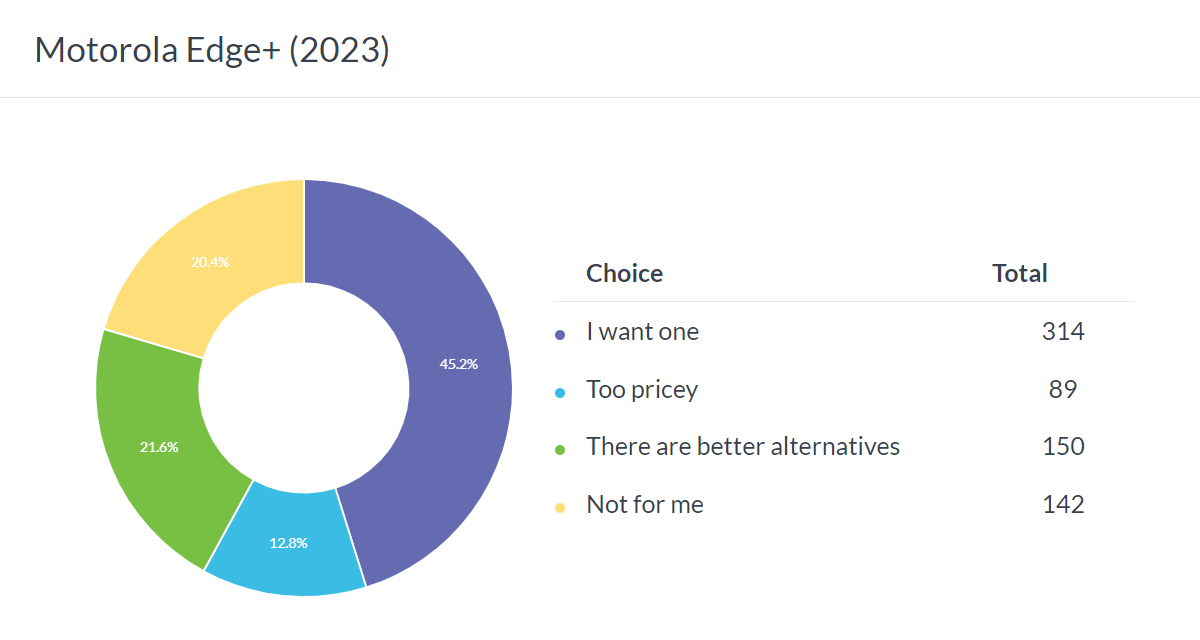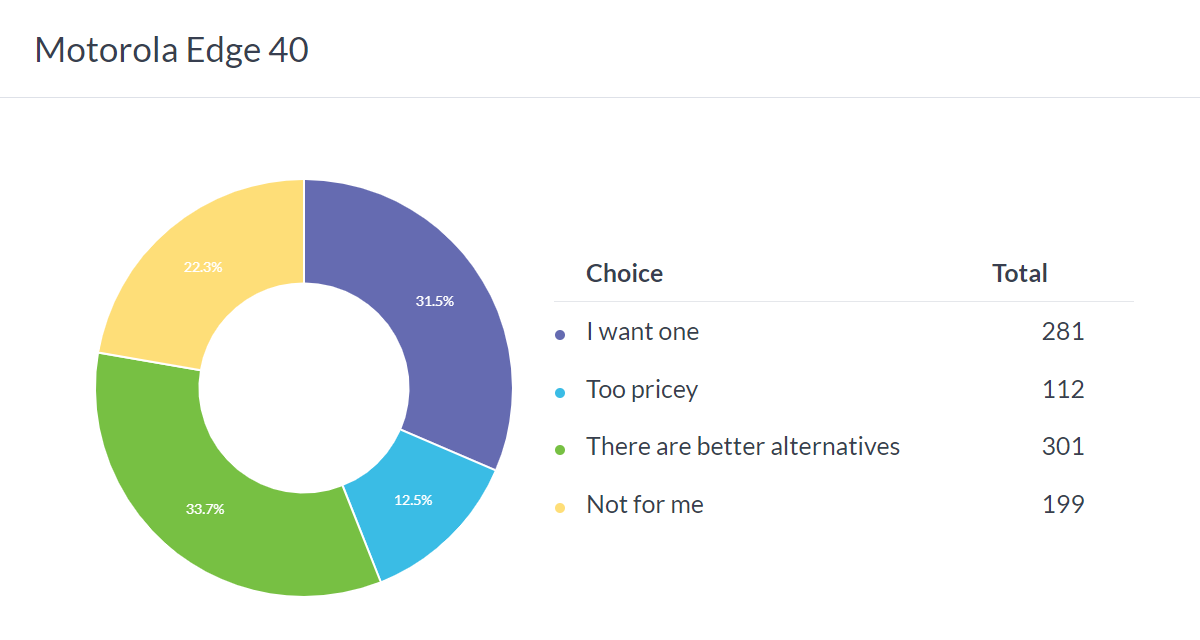
The new Motorola Edge+ (2023) for the US market is showing a lot of promise – last week’s poll shows that 45% of voters are interested in the Moto flagship. Mostly the same hardware is available as the Edge 40 Pro elsewhere, but the thing about the US market is that there are very few competing brands, especially in the flagship segment.
This means that the Edge+ is mostly going up against Galaxy S, Pixel and iPhone models, though there is the OnePlus too. While Samsung and Apple can rely on their brand names to support the higher price tags, Motorola’s popularity is past its prime.
The phone offers a lot of bang for the buck, but there were a couple of common complaints about it. The first came from people who just hate curved screens, even though many manufacturers (including Motorola and Samsung) believe that this is a premium feature.
The other thing was that people don’t have much faith in Motorola’s software support. The company promises 3 years of OS updates and 4 years of security patches, but it needs to work on its reputation – people have been burned by slow or buggy Moto updates in the past. Also, Samsung offers 4 and 5 years, respectively, as does OnePlus, Apple even more, so while this is much better than what Motorola offered before, it’s behind the competition.
Speaking of, 1 in 5 voters think that there are better alternatives in this class and the same number of people aren’t in the market for a phone like the Edge+. Still, that leaves a lot of interested people (some of whom might need a nudge with a small price drop).
Moving on to the Motorola Edge 40 for the European market, it shows potential with around a third of the vote going in its favor. However, most people aren’t impressed. The issue is two-fold. First, the price went up by €100 – the Edge 40 is €550, whereas the Edge 30 was €450 at launch (and less now).
The other issue is that the market has moved on. The new model isn’t a particularly impressive upgrade over its predecessor (here they are side by side) and even if it was, the competition has set the bar high.
At €450, the Edge 40 would have been up against the new Xperia 10 V (€450) and cheaper than the new Pixel 7a (€510). There are also the new Poco F5 and F5 Pro. And all the other phones we mentioned in last week’s post.
However, perhaps the toughest competitor for the Edge 40 is its predecessor, the Edge 30. It has the better ultra wide camera (50MP vs 13MP) and while its smaller, slower to charge battery is a setback, the Snapdragon 778G+ holds its own against the Dimensity 8020, not to mention that the older model is around €150 cheaper (the prices mentioned above are MSRP, actual store prices are lower now).
There’s nothing Motorola could do about the hardware now, but there is a lot it can do about the price difference. The aluminum frame and eco leather back on the Edge 40 (vs. plastic and plastic) are worth a small premium over the old model, though not €150.








